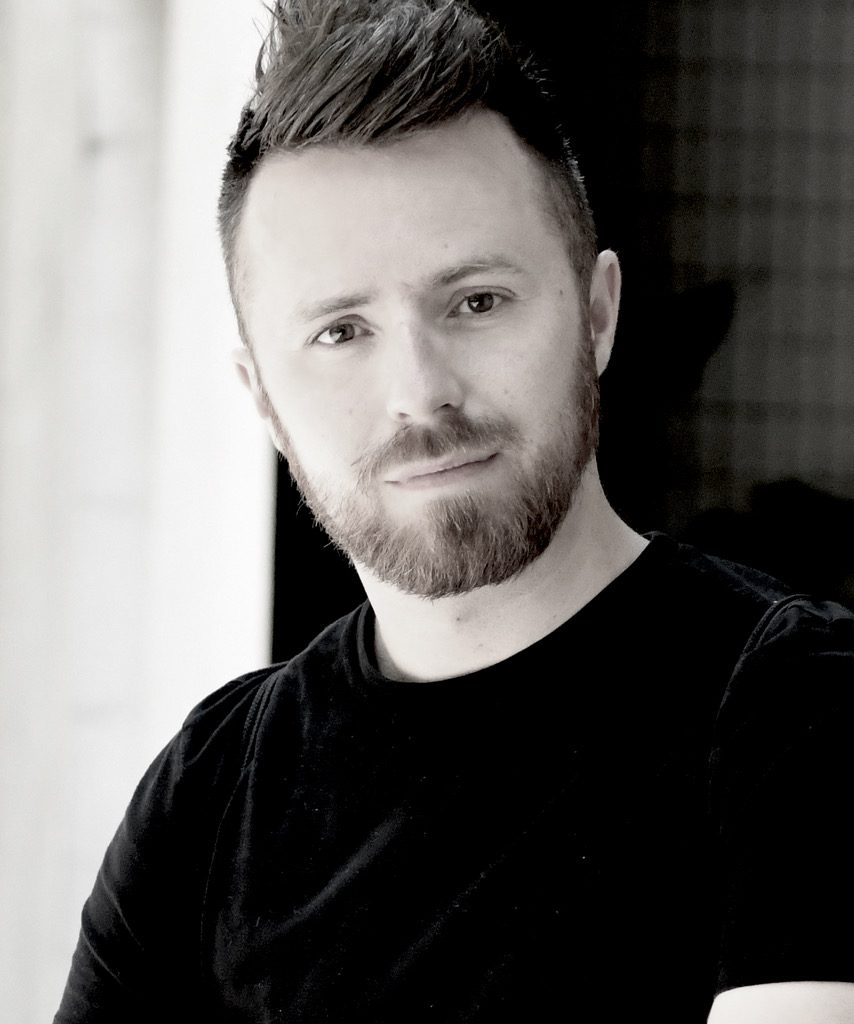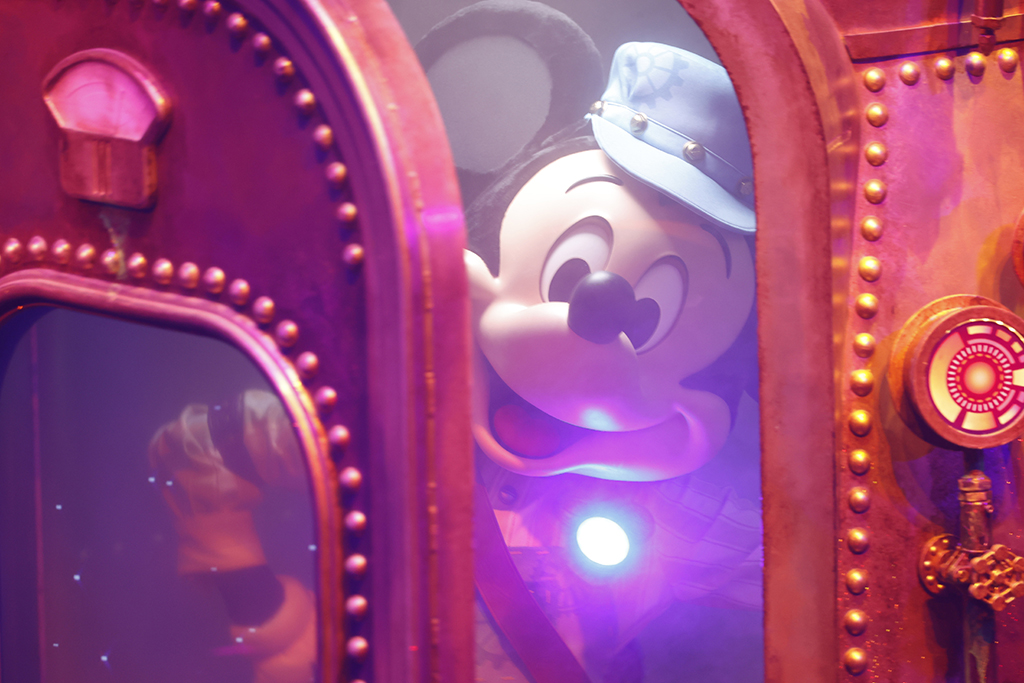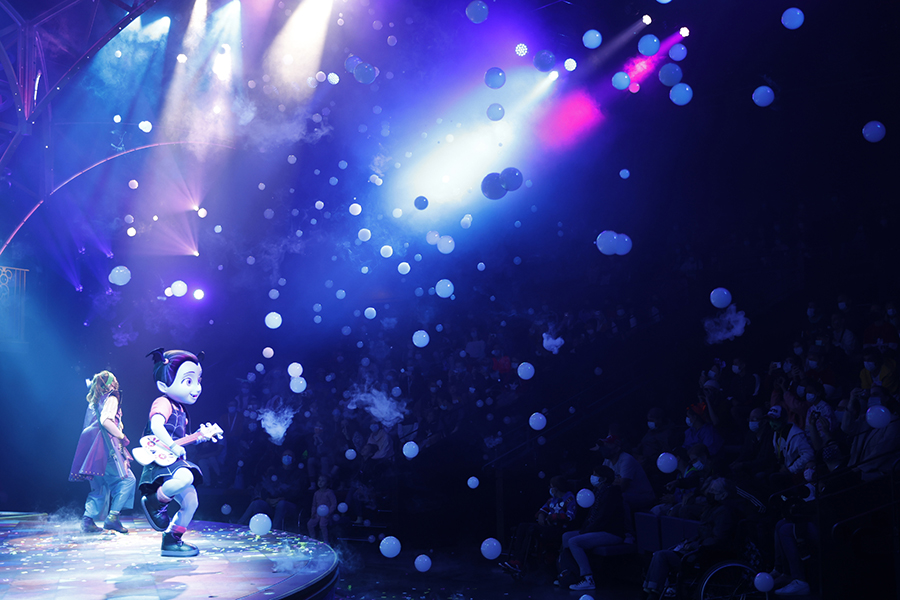Frequently contributing to the shows at Disneyland Paris, Tim highlights his participation in Disney Junior Dream Factory.

Tim, you have worked on many projects for Disneyland Paris: Mickey and the Magician, Marvel: Super Heroes United, Frozen: A Musical Invitation, The Lion King: Rhythms of the Pride Lands and now Disney Junior Dream Factory. What is your point of view on this impressive journey?
It’s really exciting to be able to work and create at Disneyland Paris. I’m fortunate to have a very eclectic career allowing me to combine skills from musical theatre, live concerts and plays. I love being a part of the wonderful teams that create the Disney magic. Its been a dream come true for me as at the age of fourteen I wanted to become an Imagineer.
What role does light play in this new show?
It plays a dual role. On the one hand, it contributes to this magnificent factory for dream’s appearance, having all sorts of little elements that light up and interact with the Characters and the storyline.
Then, on the other hand, it supports the show’s musical dimension. For each number, the light transforms this Factory into a true concert hall, a fairy-tale of lights making the whole space vibrate to the energetic rhythm of the music.
The light puts us in the mood even before the show starts. How did you manage this?
When the audience first enters the theatre, the feeling they get is that of discovering this magnificent space that seems to be alive. You see all sorts of details, like gears moving and smoke coming out of the machines. Since we did not put a stage curtain that would hide the set before the beginning of the show, I chose to create a deep blue universe, a sort of subdued ambiance. This creates a somewhat mysterious atmosphere. There are also tiny amber lights flying through space, creating a bit of magic. You don’t notice them right away, but when you see the show a few times, it’s the kind of little extra detail you appreciate. When the factory team arrives. The factory fills with golden light and comes to life. This is our equivalent to open our curtain.

With each Character intervention, we go from theatre to concert. How did you manage these two aspects?
I’ve been fortunate in my career to be able to work on both musical theatre and concerts. Many of the shows at Disneyland Paris play on these two aspects. On the one hand, the dialogue passages must be understandable and well-lit, and on the other hand, the atmosphere of an exciting concert must be created, so that the audience feels totally immersed. For Vampirina’s number, I use a lot of moving lights with upward movements and strobe effects. It’s like a U2 concert!
How does the light interact with the special effects?
Charles Saulais, the show’s Special Effects Designer, did a wonderful job. We use smoke and haze effects throughout the show to build up the atmosphere. During Vamperina’s rock concert we have bubbles filled with smoke floating down over the audience to create that party vibe!

The finale of the show is a festival of colors!
Throughout the show, in order to best embody the universe of each Character, we were very strict in terms of color palettes. The finale was an opportunity to mix it all up by creating a big rainbow. It symbolizes the fact that everyone’s dreams eventually come together and create magic. It’s a moment where everyone reconnects, on stage and in the audience.

How did you deal with the very original Steampunk side of the Factory?
From the beginning, when I worked with Scott Shaffer, the Senior Art Director for the project, we thought that the set should be able to change color, and to do that, I relied on numerous Steampunk style details. Each element, like the arches, is filled with small LED bulbs, and hidden behind them is more LED lighting, not to mention the back wall with all its patterns. In all, there are nearly 8000 individual LEDs integrated into the sets to bring this Factory to life! So even if you turn off the stage lighting, the scenery still glows. All you have to do is choose a color, and it takes up the entire space.
What are the lighting challenges in Studio D?
The challenge of Studio D is its rounded shape, like an amphitheatre. We had to make sure that the audience sitting on the sides would be able to see the performers and the Characters as clearly as if they were in the centre. In a regular theatre, everyone sees the show from the same angle. At Studio D, everyone sees the show from a different angle!
How do you design the lighting program for a show like this?
I spend a lot of time talking with the designers and developing ideas and concepts, then it’s time for rehearsals with the artists and the director. Once all the lighting is in place, we move to the centre of the amphitheatre and start programming the lights. We start with basic lighting, then add more and more layers of light in conjunction with the different scenes and Characters.

How is the lighting for the show managed on a daily basis?
The fabulous lighting teams at Disneyland Paris make sure that day in and day out they recreate the lighting that we designed. The lighting program is printed on paper and recorded on our computers. The operators work from both to make sure everything is perfect for each and every show.
In addition to your work on the show, you were involved in the Studio D design.
Yes, I did. I worked with the Disneyland Paris teams to design the lighting platform and the different gantries. I also chose all the lighting equipment and developed new devices. We have more than 200 spotlights, including moving lights and wash lights for ambient lighting on large surfaces.
We have created a place that respects the environment thanks to low consumption lighting, which is very important when you think that the lights can be on for 12 to 14 hours per day. It’s also a modular space, which can also be used for events. Plus, for the first time at Disneyland Paris, we are also able to change lighting colors in the public area. This opens up even more possibilities!
What was your favorite part of the experience?
For me, the strongest moment is when the audience first walks into the theatre. I know the show inside and out and yet when the audience is there, I see it differently. I even discover things I hadn’t noticed at first. Above all, seeing all those faces light up, there is nothing more magical!


